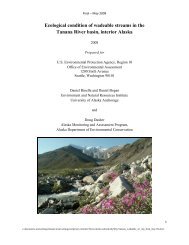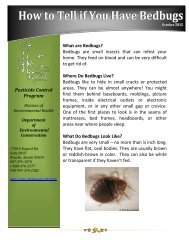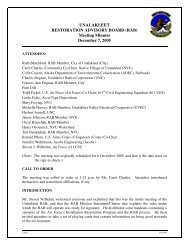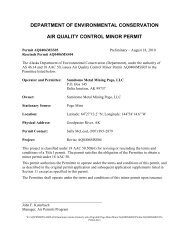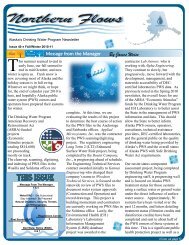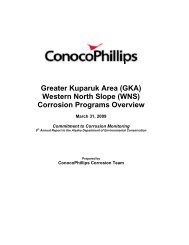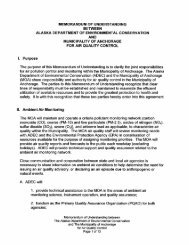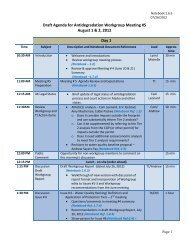2012 Ocean Ranger Guidebook Revision 3-7-12 - Alaska ...
2012 Ocean Ranger Guidebook Revision 3-7-12 - Alaska ...
2012 Ocean Ranger Guidebook Revision 3-7-12 - Alaska ...
You also want an ePaper? Increase the reach of your titles
YUMPU automatically turns print PDFs into web optimized ePapers that Google loves.
<strong>20<strong>12</strong></strong> <strong>Ocean</strong> <strong>Ranger</strong> <strong>Guidebook</strong> 3-7-<strong>12</strong><br />
Storage and handling of used lamp bulbs pose no compatibility problems. Disposal of<br />
the glass tubes can be accomplished by (1) processing with shipboard lamp crusher units that<br />
filter and adsorb the mercury vapor through H.E.P.A. and activated carbon or (2) by keeping the<br />
glass tubes intact for recycling ashore. The intact lamps or crushed bulbs are classified as<br />
“Universal Waste” when they are shipped to a properly permitted recycling facility; as such,<br />
testing is not required. The filters are disposed of as a hazardous waste in accordance with<br />
applicable US EPA or other prevailing laws and regulations.<br />
Handling Method Employed by Member Lines:<br />
(1) Fluorescent and mercury vapor lamps are collected and processed aboard by lamp crusher<br />
units and disposed of as stated above; or<br />
(2) Fluorescent and mercury vapor lamps are collected intact and landed for recycling or disposal<br />
in accordance with prevailing laws and regulations.<br />
H. Other Mercury Containing Products: CLIA Member lines have agreed to prevent the<br />
discharge of mercury containing products into the sea.<br />
Reduction in use: Where feasible, CLIA members will reduce the use of mercury<br />
containing products.<br />
Disposal: Once mercury-containing products are no longer able to be used, or require<br />
disposal, these products shall be landed ashore as universal or hazardous waste as<br />
appropriate.<br />
I. Batteries: CLIA member lines have agreed to prevent the discharge of spent batteries<br />
into the marine environment.<br />
If not properly disposed of, spent batteries may constitute a hazardous waste stream.<br />
Most of the large batteries are on tenders and standby generators. Small batteries used in<br />
flashlights and other equipment and by passengers, account for the rest. There are four basic<br />
types of batteries used.<br />
Lead-acid batteries – These are used in tenders and standby generators. They are wet,<br />
rechargeable, and usually six-celled. They contain a sponge lead anode, lead dioxide<br />
cathode, and sulfuric acid electrolyte. The electrolyte is corrosive. These batteries<br />
require disposal as a hazardous waste, unless recycled or reclaimed.<br />
Lead-acid batteries use sulfuric acid as an electrolyte. Battery acid is extremely<br />
corrosive, reactive and dangerous. Damaged batteries will be drained into an acid-proof<br />
container. A damaged and leaking battery is then placed in another acid-proof container,<br />
and both the electrolyte and the damaged battery placed in secure storage for proper<br />
disposal as a hazardous waste.<br />
Nickel-cadmium (NiCad) batteries – These are usually rechargeable, and contain wet or<br />
dry potassium hydroxide as electrolyte. The potassium hydroxide is corrosive and the<br />
cadmium is a characteristic hazardous waste. Therefore, NiCad batteries will be disposed<br />
of as hazardous waste, unless recycled or reclaimed.<br />
140






